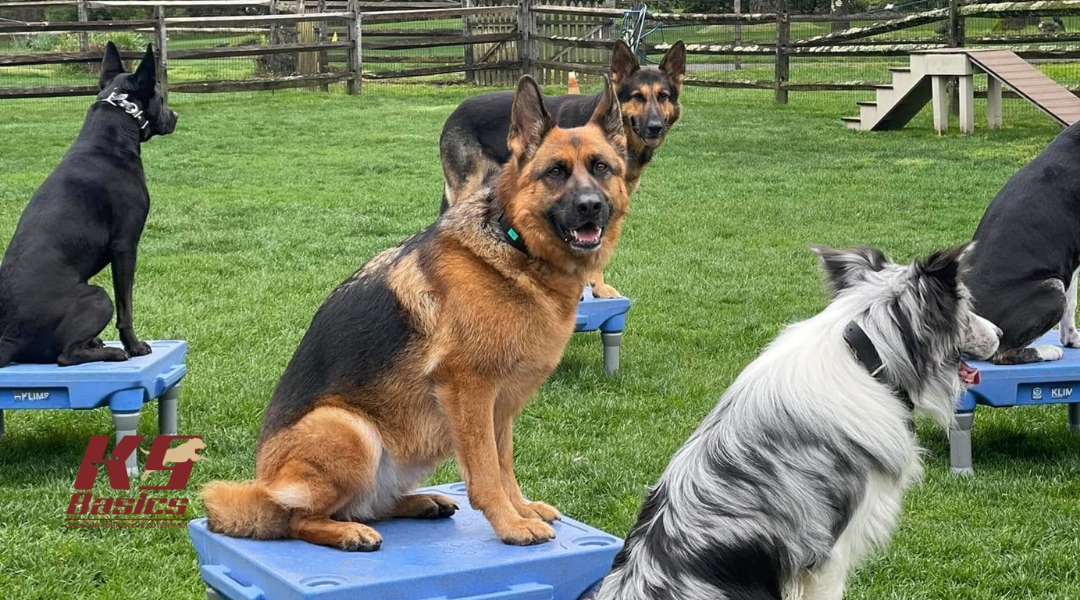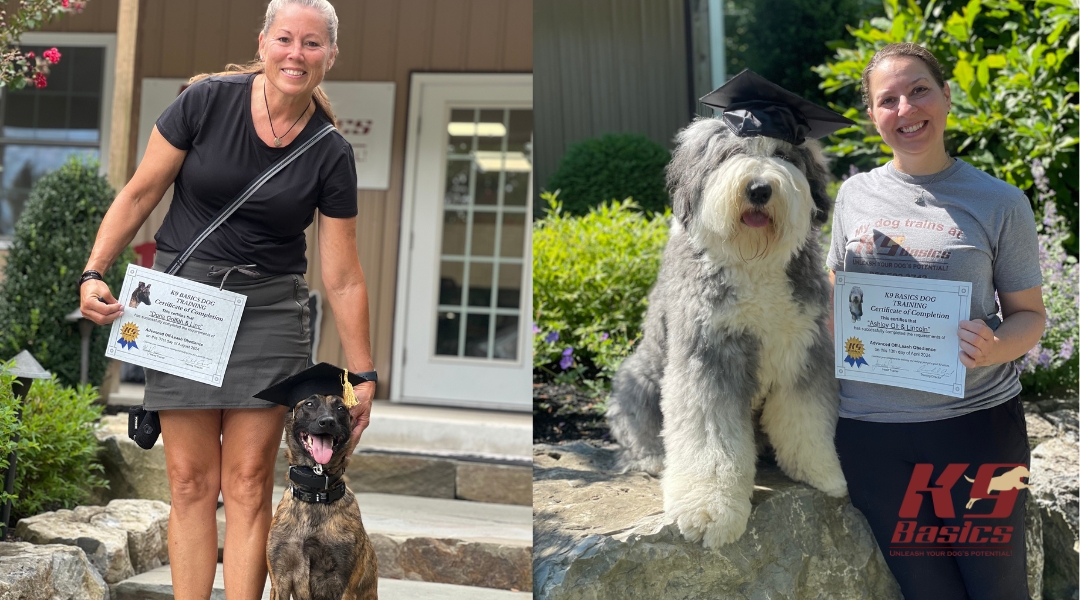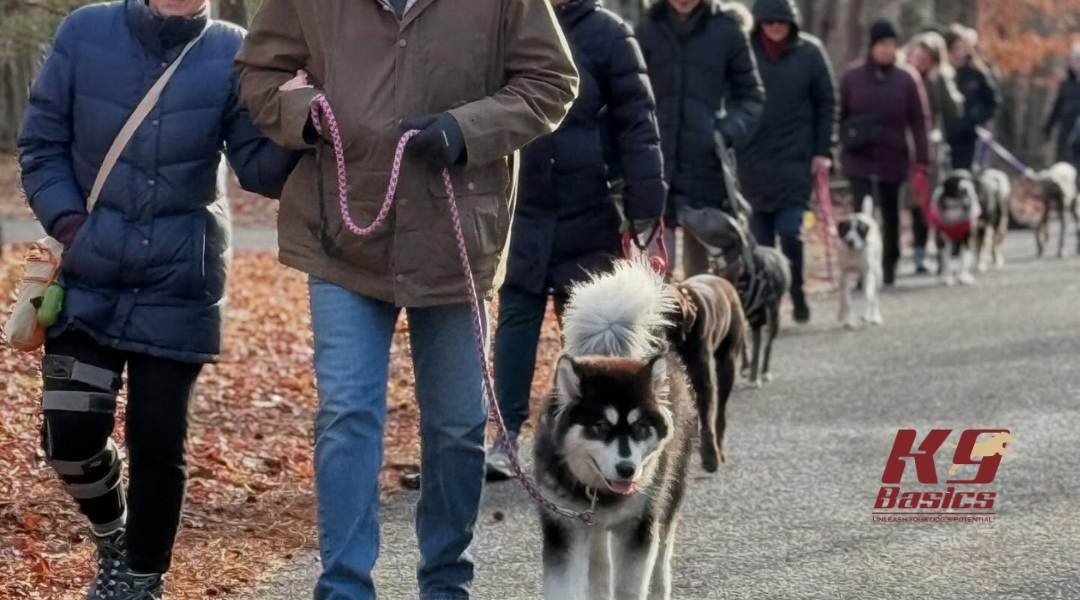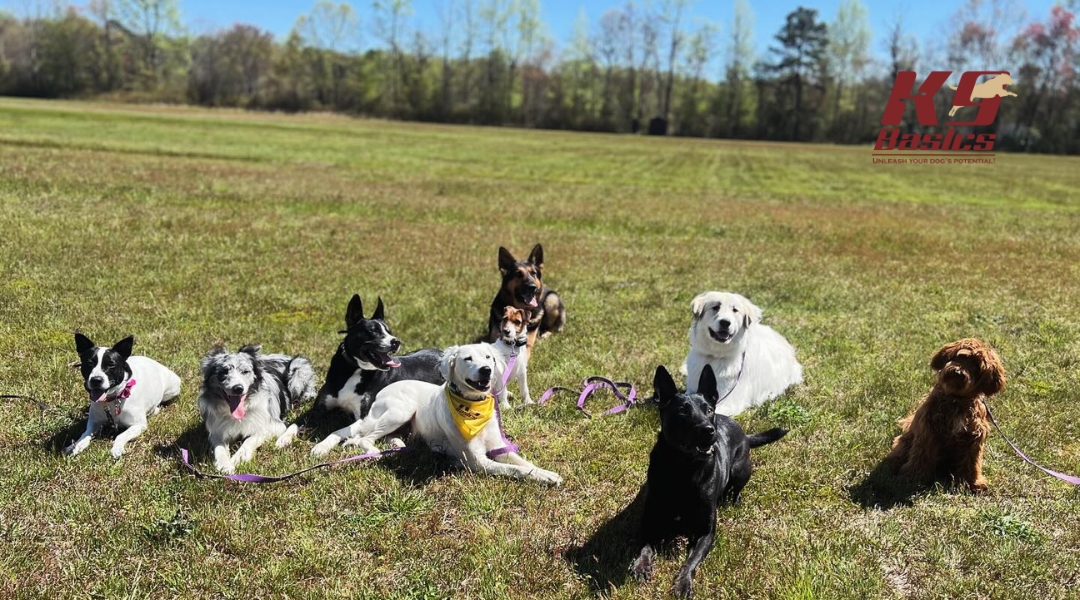There was a time when dog “graduation” meant a cute photo, a paper certificate, and a few pats and belly scratches.
But our K9 Basics team realized something: true success in dog training isn’t about signaling the end of training.
It’s about a relationship, one that holds steady through distractions, distance, and change. Will they listen to you at the park when a squirrel bolts across the path? Will they stay calm when the doorbell rings or heel beside you through a crowded street?
At K9 Basics, graduation doesn’t happen just because the program ends. It happens when your dog proves they’re ready, and when you’re both equipped to keep building on that progress, together.
What you will learn:
- Why “graduation” isn’t just a ceremony, but a meaningful milestone based on real-world skills, consistency, and the unique bond between you and your dog.
- The essential behaviors and advanced obedience standards your dog must master.
- Why ongoing group classes and continued practice are key, ensuring both you and your dog keep growing, adapting, and thriving together, long after the initial training ends.
What Defines Graduation at K9 Basics
At K9 Basics, graduation is measured by consistency, connection, and control in the real world.
We’ve intentionally moved away from traditional “end-of-program” graduations because we found that these milestones often created a false sense of finality. Training isn’t something you cross off a list; it’s something you build on despite training mistakes and bumps along the way.
Graduation at K9 Basics happens when a dog demonstrates reliable obedience with their owner, not just with our certified dog trainers. It means responding to the first command, staying focused in high-distraction environments, and performing core behaviors like sit, down, heel, and place. It means handling the unexpected and holding that focus wherever life takes you.
This approach reflects a deeper philosophy: dogs (and their humans) are always evolving. Rather than seeing training as a one-and-done experience, K9 Basics views graduation as a key turning point, where foundational skills are solid, and the door opens to advanced, off-leash work.
It’s not the end of training. It’s the beginning of a true partnership.

Training is a Journey, Not a One-Time Achievement
At K9 Basics, training isn’t treated like a short-term fix; it’s a process that grows with you and your dog. Every dog learns at their own pace, and real progress happens through repetition, consistency, and time spent together. The initial training lays the groundwork, but it’s through ongoing practice that those behaviors become second nature.
Just like people, dogs thrive with continued education. Without regular reinforcement, even the most well-trained dog can slip back into old habits. That’s why K9 Basics emphasizes lifetime group training, not as a bonus, but as a necessary layer of support.
These sessions help both dogs and their owners sharpen skills, troubleshoot challenges, and stay on track as life changes.
A puppy’s needs aren’t the same as those of an adolescent or senior dog. New environments, life stages, and even changes in household dynamics can bring out different behaviors. What worked last year may not be enough today.

From Group Classes to Advanced Off-Leash Mastery
At K9 Basics, training is designed to evolve. Starting with structure, building through consistency, and culminating in true off-leash control.
Dogs typically begin with the immersive Board & Train program, where they learn foundational commands and behaviors under professional guidance. But the real growth begins once they transition into group classes.
Group training introduces real-world distractions: other dogs, people, smells, sounds—the kinds of challenges your dog will face every day. It’s here that dogs begin to respond reliably to their owners, not just to trainers. They learn to listen the first time, even with competing stimuli all around.
For dogs who’ve truly mastered those core skills, the next level is the Advanced Class.
This isn’t just a more difficult version of group training; it’s a different ballgame altogether. Dogs must demonstrate precision, focus, and full off-leash responsiveness in high-distraction settings. From distance recalls to mid-command stops and out-of-sight stays, the Advanced Class pushes both dog and owner to operate as a seamless team.

Graduation Requirements: What K9 Basics Looks For
At K9 Basics, our standards are rooted in real-world performance, not just classroom compliance.
It’s not enough for a dog to perform when it’s easy; they must demonstrate reliability when it counts.
The goal is to ensure that each dog graduates not only with skills but with the ability to apply them consistently with their owner in unpredictable environments.
Obedience with the Owner, Not Just the Trainer
A key benchmark for graduation is whether the dog responds to their person, not just the professional.
It’s common for dogs to follow commands from a trainer they trust, but the true test is whether they’ll do the same for their owner, especially when faced with distractions, temptations, or new surroundings.
Graduation readiness hinges on this shift in leadership and trust.
6 Core Skills for Graduation Readiness
To be considered for graduation, a dog must show consistent proficiency in several advanced behaviors, especially under distraction. These include:
- Sit and down under distraction
The dog must maintain basic positions in busy, noisy, or stimulating environments without breaking focus. - Holding “place” under distraction
Whether it’s a park bench, a mat, or a training platform, the dog must stay calmly in “place” until released—even when people or other dogs pass by. - Controlled heel position with the owner
Walking neatly at the owner’s side without pulling, weaving, or lagging, regardless of surroundings, is a must. - Immediate response to the first command
Delayed obedience isn’t good enough. Dogs are expected to respond the first time they’re asked, without repeated cues. - Mid-recall stops and distance commands
Dogs must be able to stop on command during a recall, pivoting focus and direction even from a distance. - Out-of-sight stability: sit/down stay until owner returns
One of the most advanced tests is remaining calm and in position even when the owner walks away and disappears from view.
Reliability in High-Distraction Environments
Graduation at K9 Basics happens in the real world, not in a vacuum.
Dogs must be able to hold their training together at the park, during group classes, or out in public spaces.
Whether it’s a skateboarder flying by or another dog barking nearby, graduates are expected to stay focused, composed, and obedient.
Demonstrating the Dog’s Skills in Real-World Conditions
To ensure authenticity, K9 Basics captures video footage of dogs performing their graduation-level skills. We record dogs holding position, responding to commands, and moving with their owners in dynamic, uncontrolled environments.
- Video Proof as Part of the Graduation Criteria
The video acts as both a milestone and a teaching tool, proof that the dog’s progress is real and repeatable. - No Shortcuts: Dogs Must Earn It
There are no handouts or shortcuts to graduation. Every dog must demonstrate readiness through performance, not potential. It’s a badge of honor that’s built through effort, consistency, and trust between dog and owner.

Lifetime Group Training: Graduation Isn’t Goodbye
At K9 Basics, graduation doesn’t mean the journey ends; it means your dog is ready for the next chapter. That’s why every training program includes lifetime access to group classes, and continued participation isn’t just encouraged, it’s expected.
Why Continued Participation Is Expected
Training isn’t static.
A dog’s behavior can shift with age, life changes, or environmental stressors. Even after mastering advanced skills, ongoing group sessions help dogs stay sharp, reinforce what they’ve learned, and prevent regression. It also provides owners with continued support, guidance, and a community to grow within.
Building Long-Term Focus and Consistency
Dogs, like people, need practice to maintain their best habits. Lifetime group classes provide a structured environment to reinforce foundational behaviours, refine advanced skills, and cultivate resilience in the face of new distractions.

Keep Growing with Your Dog and K9 Basics!
Call us at (866) 592-2742 or, if you’re from New Jersey, Pennsylvania, Delaware, or New York, visit us at 131 Kenilworth Road, Marlton, NJ 08053, to learn more about our group training classes.
Also, browse our blog and social media for various topics about dogs and their lives with us!
https://k9basics.com/k9-basics-dog-training-graduation-criteria/
